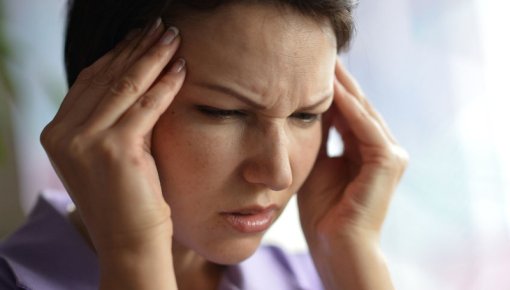Barnes NP. Migraine headache in children. BMJ Clin Evid 2015: pii: 0318.
Belam J, Harris G, Kernick D et al. A qualitative study of migraine involving patient researchers. Br J Gen Pract 2005; 55(511): 87-93.
Deutsche Gesellschaft für Neurologie (DGN), Deutsche Migräne- und Kopfschmerzgesellschaft (DMKG). Therapie der Migräneattacke und Prophylaxe der Migräne (S1-Leitlinie). AWMF-Registernr.: 030-057. 2020.
Diamond M. The impact of migraine on the health and well-being of women. J Womens Health (Larchmt) 2007; 16(9): 1269-1280.
Evers S, Marziniak M. Clinical features, pathophysiology, and treatment of medication-overuse headache. Lancet Neurol 2010; 9(4): 391-401.
Fenstermacher N, Levin M, Ward T. Pharmacological prevention of migraine. BMJ 2011; 342: d583.
Gilmore B, Michael M. Treatment of acute migraine headache. Am Fam Physician 2011; 83(3): 271-280.
Hacke W. Neurologie. Berlin: Springer; 2016.
Harris P, Loveman E, Clegg A et al. Systematic review of cognitive behavioural therapy for the management of headaches and migraines in adults. Br J Pain 2015; 9(4): 213-224.
International Headache Society (IHS). The International Classification of Headache Disorders, 3rd edition – ICHD-3. 2018.
Kindelan-Calvo P, Gil-Martínez A, Paris-Alemany A et al. Effectiveness of therapeutic patient education for adults with migraine. A systematic review and meta-analysis of randomized controlled trials. Pain Med 2014; 15(9): 1619-1636.
Kropp P, Meyer B, Dresler T et al. Entspannungsverfahren und verhaltenstherapeutische Interventionen zur Behandlung der Migräne. Leitlinie der Deutschen Migräne- und Kopfschmerzgesellschaft. Nervenheilkunde 2016; 7-8: 502-515.
Marmura MJ, Silberstein SD, Schwedt TJ. The acute treatment of migraine in adults: the american headache society evidence assessment of migraine pharmacotherapies. Headache 2015; 55(1): 3-20.
Woldeamanuel YW, Cowan RP. Migraine affects 1 in 10 people worldwide featuring recent rise: A systematic review and meta-analysis of community-based studies involving 6 million participants. J Neurol Sci 2017; 372: 307-315.
IQWiG health information is written with the aim of helping people understand the advantages and disadvantages of the main treatment options and health care services.
Because IQWiG is a German institute, some of the information provided here is specific to the German health care system. The suitability of any of the described options in an individual case can be determined by talking to a doctor. informedhealth.org can provide support for talks with doctors and other medical professionals, but cannot replace them. We do not offer individual consultations.
Our information is based on the results of good-quality studies. It is written by a team of health care professionals, scientists and editors, and reviewed by external experts. You can find a detailed description of how our health information is produced and updated in our methods.

